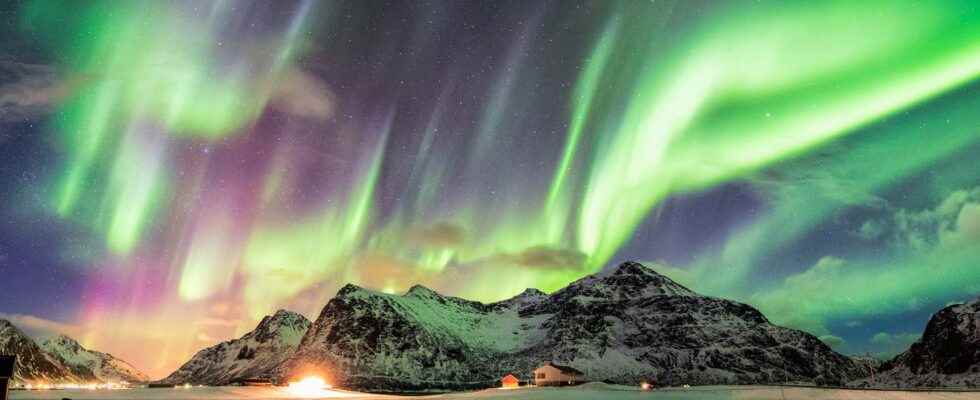You will also be interested
[EN VIDÉO] Stunning Northern Lights A few days – October 12, 2021 – after a coronal mass ejection recorded from the side of our Sun – October 9, 2021 – researchers witnessed the auroral dynamics caused by the event in our atmosphere. The images reveal splendid green auroras resulting from interactions between energetic particles from the solar wind and oxygen from the upper atmosphere. But also a magnificent rarer purple aurora and a sign of the meeting of these particles with ionic nitrogen. © All-sky camera, Kiruna Atmospheric and Geophysical Observatory (KAGO) within the Swedish Institute of Space Physics (IRF). Data provided as part of ESA’s Space Weather Service Network.
Particles from a powerful solar flare hit the Earth between Tuesday July 19 and Wednesday July 20. Remember that the aurora is a natural phenomenon that occurs in the polar regions when a solar storm reaches our Planet and its magnetic field.
Solar flares occur due to a large buildup of energy on the surface of the Sun, which then ejects filaments of solar plasma which are then shot out into space and sometimes onto the high atmosphere of the earth.
The long snake-like filament cartwheeled its way off the #Sun in a stunning ballet. The magnetic orientation of this Earth-directed #solarstorm is going to tough to predict. G2-level (possibly G3) conditions may occur if the magnetic field of this storm is oriented southward! pic.twitter.com/SNAZGMmqzi
— Dr. Tamitha Skov (@TamithaSkov) July 16, 2022
A massive solar flare in recent days
A few days before, the Nasa warned the world of a massive solar flare between July 16 and July 19, posing a serious risk of system disruptions GPS and signals radio on the American West Coast in particular.
New region 3058 fires at M2.9-flare! It is now the fourth region on the Sun with the X-factor. NOAA sets X-flare risk at 10% but that could rise soon. More #RadioBlackouts impacting amateur radio operations on Earth’s dayside are likely. #GPS users stay vigilant near dawn & dusk. pic.twitter.com/KNXcIRPwIW
— Dr. Tamitha Skov (@TamithaSkov) July 14, 2022
This eruption follows a long series of similar events that have occurred this year, particularly during the March.
This ejection of particles has the consequence of producing auroras at latitudes lower than usual: if the American states of Washington, Montana, or even Canada, are used to seeing them, they are less common in northern California or Oregon, but nevertheless possible during solar events as strong as this week’s.
News northern Lights should be sighted until the end of the week in Canada, northern Russia, Greenland and Antarctic.
Aurora Borealis filmed over New Zealand by NASA on July 17. © Ian Griffin of the Otago Museum in Dunedin
Interested in what you just read?
